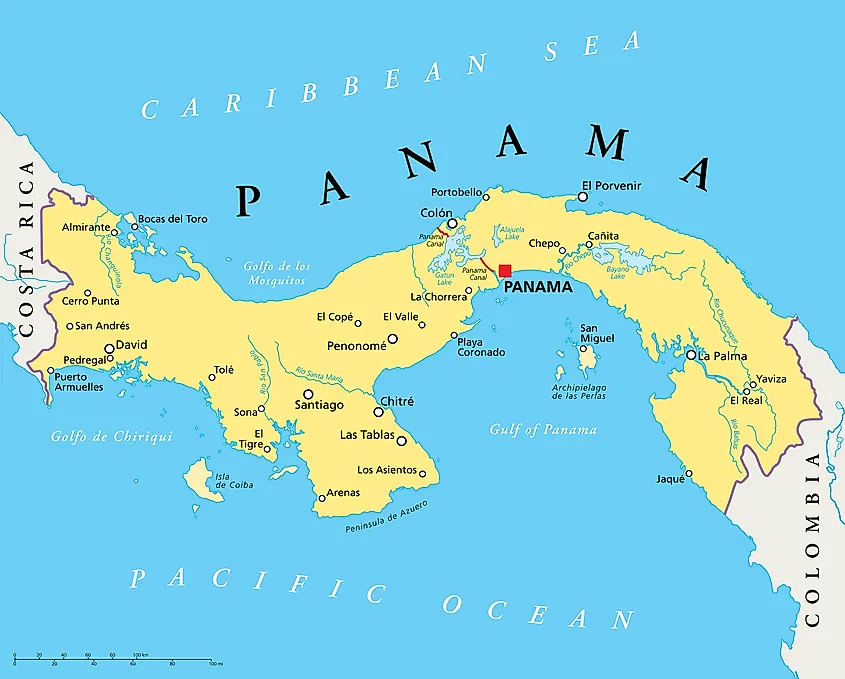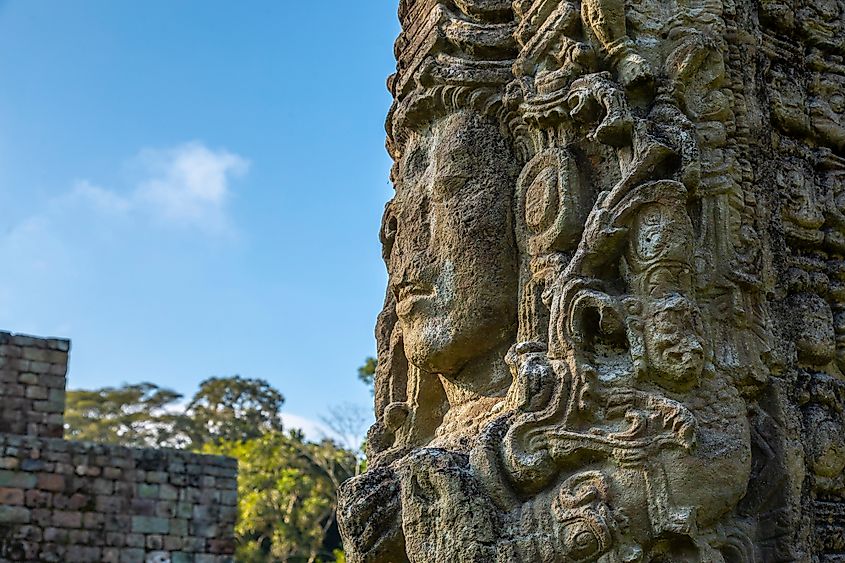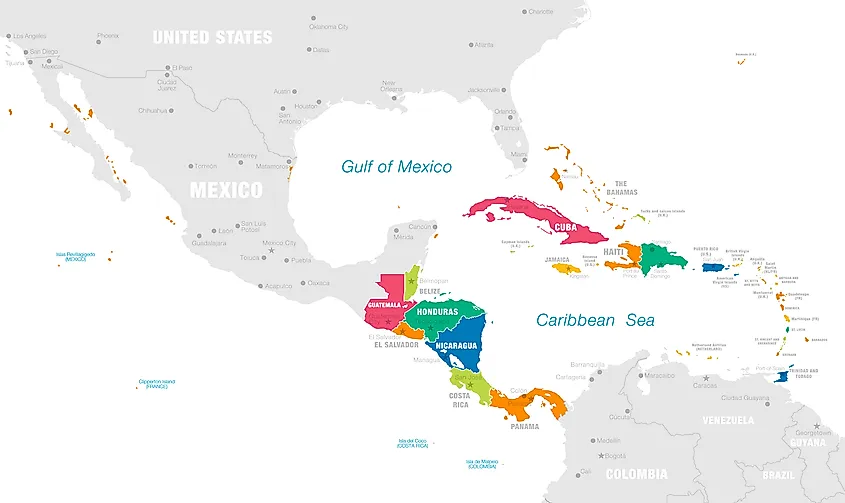Is Central America Part Of North America?

- Central America is the southernmost region of North America.
- Central America consists of 7 countries: Belize, Guatemala, Honduras, El Salvador, Nicaragua, Costa Rica, and Panama.
- The United States is the biggest trading partner of the countries in Central America.
- The U.S. dollar can be used as a form of currency in El Salvador, Guatemala, and Panama.
Central America is the southernmost region of North America. It is comprised of 7 countries: Belize, Guatemala, Honduras, El Salvador, Nicaragua, Costa Rica, and Panama. All of these countries are located to the north of the Panama-Columbia border, which is generally considered to be the boundary between North and South America. In addition, the history and economics of Central America link the region closely with the rest of North America.
The Geographic Continental Divide

Geography is the first and foremost factor that makes Central America part of North America. As previously noted, the demarcation line between North and South America is generally considered to be the border between Panama and Columbia. Whereas Panama is considered part of North America, Columbia is considered to be a South American country. Hence, Central America is the southernmost part of North America.
If you look in an atlas, you will find that the geographical demarcation line between North and South America is located in the Isthmus of Panama. Most atlases put this line specifically in the area of the Darien Mountains watershed divide, which is located on the Panama-Columbia border, where the isthmus connects with South America.
Historical Links With The Rest Of North America

Geography alone is the not the only factor that makes Central America part of North America. The region also has a historical connection to the rest of the North American continent. For example, one of the greatest pre-Columbian civilizations in North America was the Mayan civilization. This civilization stretched from what is now southern Mexico to the territory that now encompasses Honduras. Prior to the Mayans, the main cultural influences in Central America, such as the Olmec and the Nahuatl, were also of North American origin.

In addition, remembering that the Caribbean is also considered part of North America, Caribbean cultural influence penetrated the eastern coasts of Central America, from present-day Panama to Honduras. There were cultural influences in pre-Columbian Central America from South America as well, but they were not as dominant as the Mayans and others from North America. When Spain conquered Central America, much of it was linked to the rest of the country’s possessions in North America. Indeed, the Viceroyalty of New Spain stretched from Spanish possessions in the present-day U.S. to the northern part of Central America. The only country in Central America that was historically linked with South America was Panama, which was once part of the South American country of Columbia.
Economic Links With The Rest Of North America

In addition to being connected geographically and historically with the rest of North America, Central America is also closely connected with the rest of North America through trade. The United States is the biggest trading partner for Central American countries. For example, Guatemala’s imports from the U.S. in 2019 accounted for 37.1% of all the country’s imports, while the U.S. was also the destination for 34.1% of Guatemala’s exports. Similar figures exist in other Central American countries. Mexico is also one of the biggest trading partners for Central American countries. In addition, El Salvador, Guatemala, and Panama accept the U.S. dollar as a form of currency. There is also a free trade agreement known as CAFTA-DR, which links the U.S. with the Central American countries of El Salvador, Honduras, Costa Rica, Guatemala, and Nicaragua. The Caribbean country of the Dominican Republic is also part of this agreement.











